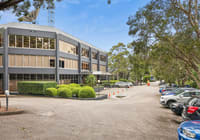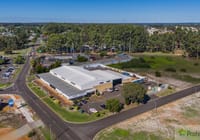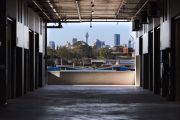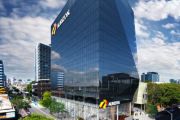
Housing developer Scape keeping builders afloat
Australia’s largest student accommodation developer, Scape, is holding up three of its five contract builders to prevent them from going under at a time of soaring costs and supply chain constraints, in the latest sign of the pressures on Australia’s commercial construction industry.
Privately owned Scape was making more frequent progress payments, giving builders more leniency with timing and was looking at contractual models that would protect builders “from the downside a little more,” co-founder Craig Carracher said.

“We are building over 8000 apartments now in various stages of development and construction,” Mr Carracher told The Australian Financial Review.
“It requires a different solution, especially as we are a seasonal builder needing to open properties in time for annual student intake.”
Scape, which this week said it had closed its third joint venture development fund to create 3000 more student housing units, was supporting the three builders to enable them to deliver the projects, he said.
“We are financially supporting them to ensure they can complete the project,” Mr Carracher said, declining to identify the companies.
“I’m not saying the builders are in trouble, but what I can say is the construction costs are real, the weather in Sydney has been real and costs have accelerated. It’s a hard business model.”
The comments show that the shifting of risks such as weather delays by builders back onto clients, as happened in the aftermath of the COVID-19 pandemic, remain necessary when insolvencies are mounting. They also show that developers, facing a precarious building sector, have to follow more collaborative contracts and processes.
The mounting finance and construction costs putting pressure on contractors and suppliers have led 2067, or almost 28 per cent of the total number (7482) of companies, to fall into insolvency this financial year, figures from the corporate watchdog, the Australian Securities and Investments Commission show.
The numbers reflect a growing number of construction failures.
For the first three quarters of FY23 – including complete figures for March – there were 1598 construction industry insolvencies making up 28.1 per cent of total insolvencies. Over the same period of FY22 there were 839 construction-industry insolvencies, accounting for 25 per cent of the year-to-date total.
Builder stress has also hit the office fit-out sector, where costs have risen 5.6 per cent in the past year to $2810 per square metre because of skilled labour shortages and rising construction expenses, according to JLL’s annual fit-out cost guide.
Sydney remained the most expensive Australian city for a fit-out, at $2912 per square metre, but fell behind Tokyo ($3127) as the most expensive market in the Asia-Pacific region after topping the list last year, JLL said. Sydney was followed by Canberra, Adelaide and Melbourne, which all had above-average fit-out costs compared to the region.
Fit-out builders have become more selective about which projects they take on and clients are taking on more risk to accommodate them, said JLL’s managing director of project and management services, Alan McKay.
Clients were increasingly entering open contracts, where builders could change pricing to reflect rising labour and material prices over time. Contracts were also increasingly using monthly payments, rather than less-frequent staged payments, to help builders get the cash flow to deliver projects.
“As much as a client wants to get a good price, they also want to make sure they’ve got the right price that’s not going to send the builder into liquidation because it can be more expensive on their side of things as well if there are delays and everything else that comes with that,” he said.
Office fit-out builders that have entered into administration include Rork and NPM. Both struggled to stay afloat, in part, because they were on fixed contracts from before the pandemic, when material costs were much lower.
Commercial development was also affected by planning and taxes, such as Victoria’s windfall gains tax on rezoned land, Mr Carracher said
“Environmental risk shifts to the owner for what’s underground … and in all the exigencies of the build inflation, but the lost time and risk in planning hits returns more than the risk of inflation and exigencies in the build period,” he said.
However, Mr Carracher said Scape’s co-operation with builders went beyond financial arrangements.
“We’re sitting on site all day every day with our development and project management teams,” he said.
The economic conditions had revealed weaknesses of commercial contracting models.
“This historical rising market model of gross maximum price contracts, designed to derisk the developer from the contingencies of the build, is only as good as the credit risk on the builder side, which is strained in this economy,” Mr Carracher said.
“It’s a macroeconomic issue for Australia that our builders are under enormous pressure. If there was less lost time and lost value of money in planning, there would be more capacity for risk in the building itself, where there are massive risks already.”











